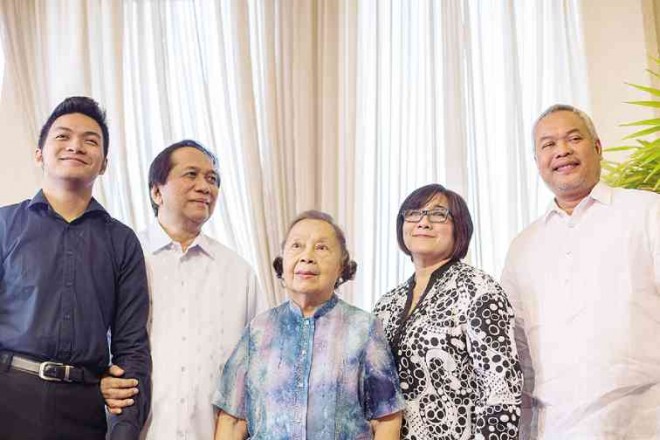
The tertulia—immortalized in a way in Nick Joaquin’s play “A Portrait of the Artist as Filipino”—was an intimate party during the halcyon days before World War II, a small gathering in the home of a friend or relative. There was entertainment, piano music and singing, and congenial conversation centering on the arts and politics.
On March 11 at the lobby of the Cultural Center of the Philippines, the genteel tradition of the tertulia will be revived in the form of a sunset serenade, “Harana sa Dapithapon,” at 4:30 p.m.
This was announced at a recent press conference at the CCP presided over by Chris Millado, CCP vice president and artistic director, and Danny Dolor, president of the Tribung Pinoy Foundation, sponsor of the sunset serenades.
Top performers
The series will bring together A-list talents in the Philippine musical firmament.
The performers on March 11 are soprano Lisa Cabahug and tenor Lemuel de la Cruz; violinist Gilopez Kabayao, pianist Corazon Kabayao and their daughters, violinists Siciliene and Farida Kabayao.
The performers on April 8 will be the Kabataang Gitarista; and on June 10 singers Miguel Castro and Fame Flores, and Los Lipeños, will take center stage.
The sunset serenades, to highlight Philippine classical, traditional and folk music, are free and open to the public, especially senior citizens and students. Expect a lot of kundiman, harana, balitaw, danza, even OPM and instrumental music. There will be songs by great composers like Nicanor Abelardo and Francisco Santiago, and the songwriters who came later.
During the press launch, Cabahug interpreted time-honored songs like “Lagi Kitang Naalala” by Levi Celerio and Leopoldo Silos; “Ano Kaya ang Kapalaran” by Francisco Santiago; “Ay ay Kalisud,” a traditional Visayan song; and the now standard “Gaano Kita Kamahal” by National Artist Ernani Cuenco.
Classical guitarist Christian John Mercader performed Louie Ocampo’s “Ikaw” as arranged by Jose Valdez.
For young and old
“The tertulia was during the time of our grandfathers and we want the young to learn more about our traditions,” said Millado. “We want to attract this kind of audience.” An OPM can sound classical depending on the arrangement, he indicated, as played by Mercader and arranged by Valdez.
“The songs of the youth today have their roots in our grandmothers’ songs,” the CCP artistic director noted. “Our sources are the same. These are the songs of the youth of yesteryears, and they have survived.”
Is the harana relevant to the youth?
“Yes, these are the music of yesteryears,” said Dolor, who has long championed the cause of Philippine music through his Tribung Pinoy Foundation. “We will try to present it in another form, tertulia-type. That is now our presentation.”
In promoting classical Philippine music through the decades, did he sometimes feel like a voice crying out in the wilderness?
“Yes, many times,” Dolor said. “Medyo mahirap (somewhat difficult). Sometimes I feel I want to give up. Sometimes I succeed, sometimes I don’t but I’m always trying. I still believe that the music of our generation can be appreciated.”













































